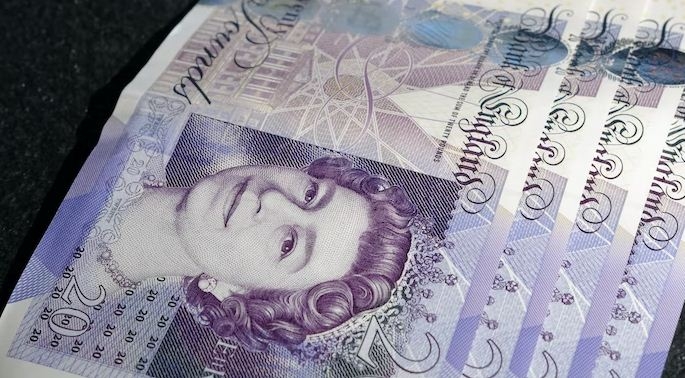Sterling also tumbled 1.3% against the euro, having hit its lowest since September 2020 at 92.60 pence…reports Asian Lite News
Sterling crashed to a record low on Monday as traders scampered for the exits on mounting concern that the new government’s economic plan will stretch Britain’s finances to the limit.
The British pound’s searing drop helped the safe-haven U.S. dollar to a new two-decade peak against a basket of major peers, while the euro hit a fresh two-decade low against the greenback.
In Japan, authorities reiterated that they stood ready to respond to speculative currency moves, after they intervened last week to bolster the yen for the first time since 1998.
But it was sterling’s precipitous fall that grabbed traders’ attention. It slumped as much as 4.9% to an all-time nadir of $1.0327 , before stabilising around $1.0699 in early London trade — still down 1.5% on the day.
That followed a 3.6% drop on Friday, when new finance minister Kwasi Kwarteng unveiled historic tax cuts funded by the biggest increase in borrowing since 1972. Kwarteng on Sunday dismissed the freefall in the pound, saying his strategy was to focus more on longer-term growth and not short-term market reaction.
Sterling also tumbled 1.3% against the euro, having hit its lowest since September 2020 at 92.60 pence .
Kit Juckes, head of currency strategy Societe Generale in London, said markets had a tendency to overshoot but noted two points on sterling’s slide.
“One is the loss of confidence in UK fiscal policy and that won’t help sterling,” he said. “The second is that the mini budget has allowed sterling to be the short of choice against the dollar.”
The euro also touched a fresh 20-year trough at $0.9528 , as the pound’s slide rippled across markets.
Sunday’s election in Italy, in which a rightist bloc looked set for a solid majority, was also in focus.
The dollar built on its recovery against the yen following last week’s currency intervention by Japanese authorities.
It firmed 0.3% to 143.76 yen , heading back toward Thursday’s 24-year peak of 145.90. It tumbled to around 140.31 that same day after Japan conducted yen-buying intervention for the first time since 1998.
The dollar index – whose basket includes sterling, the euro and the yen – reached 114.58 for the first time since May 2002 before easing to 113.16, just a touch firmer on the day.
“The dollar strength was in large part because of the heavy selling of the sterling,” said Saktiandi Supaat, regional head of FX research and strategy at Maybank.
“It’s more of a risk-off sort of thing,” Supaat added. “Global recession fears have actually intensified and widened quite broadly.”
The risk-sensitive Australian dollar briefly slumped to $0.64845, its lowest since May 2020, and the Canadian dollar reached a fresh trough at C$1.3638 per greenback, its weakest since July 2020.
China’s offshore yuan slid to a new low of 7.1728 per dollar, its weakest since May 2020. Onshore, the yuan also touched a 28-month trough of 7.1690.
The fresh lows came even as the central bank said it will reinstate foreign exchange risk reserves for some forwards contracts, a move that would make betting against the yuan more expensive and slow the pace of its recent depreciation.
ALSO READ-Sterling Bags Top Media Award

Leave a Reply